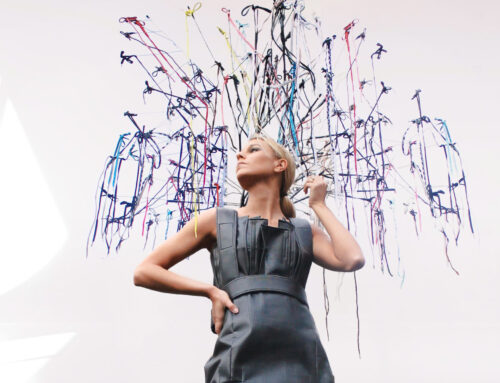
Carrie Gehling is a chirpy, bright-eyed woman, full of one-liners. It’s largely that disposition that has carried her through a lengthy battle with diabetes, which began in her adolescence. The disease has taken an exceptionally heavy toll on her health, causing partial amputations to both of her legs and rendering her unable to walk. Vascular damage brought on by the diabetes has caused four heart attacks, one of which left her clinically dead for nearly three minutes. She has been on dialysis for the past 13 years.
“It’s no way to live,” Gehling says with uncharacteristic seriousness. “I wouldn’t wish it on my worst enemy.”
Around the time she began her dialysis, Gehling started exploring the possibility of a kidney transplant, which would eventually allow her to function without dialysis. But because her medical history made her a high-risk candidate, hospital after hospital denied her.
“Each time I was denied, it was crushing,” she says. “I had to totally turn it over to God and realize that it was in his hands. Like I always say, ‘Thy will be done.’”
It was in the midst of this quest for a kidney transplant that Monsignor Mark Seitz became a pastor at her church, St. Rita Catholic Church.
“When I met Carrie,” Seitz says, “I was inspired to see how she used her faith to bear this.”
Compelled to help her, Seitz tried to arrange a trip to Lourdes, France, with the Knights of Malta, a group that chaperones pilgrimages to the holy site.
“They said because of her fragile health, they were worried she couldn’t make the journey,” Seitz explains. “But I didn’t give up. I just scaled it back and started thinking about what we could do closer to home.”
Seitz was able to find a pilot within their parish who owned a small plane. With the help of that pilot, he was able to arrange a day trip to Basilica of Our Lady of San Juan del Valle in San Juan, Texas. Gehling says that pilgrimage in April 2008 became a turning point.
“When I walked in to that basilica, I started welling up in the eyes because the presence of God was so overwhelming. It was this beautiful aura that washed over you. Just thinking about it makes me smile.”
It was soon after that pilgrimage that the tide began to turn: Medical City Dallas Hospital agreed to do the kidney transplant, under the condition that she find a live donor.
“There is a higher success rate with live donors,” Gehling explains.
Even though she had cleared one hurdle, another remained. Finding an acceptable donor was a tall order. Typically, kidney donors are tested on a set of nine criteria. In most cases, donors and recipients have to match five of those criteria. In Gehling’s high-risk case, donors had to match her on seven of the nine criteria.
In other words, the odds were stacked against her.
“And even if we found a donor that matched,” Gehling says, “the doctors told me there was still an 86 percent chance I wouldn’t make it off that surgery table. I just said, ‘Well, that’s OK. My faith is going to carry me another 114 percent.”
Inspired by her unyielding faith, Seitz says he started to reassess his own faith.
“I realized that if I was going to ask other people in this church to donate a kidney, I needed to be prepared to do it myself. We preachers get a lot of chances to talk about faith, but we also need to put it in practice,” Seitz says. “This was a chance for me to do that.”
Seitz followed through, “walking the talk” as Gehling puts it. He volunteered to donate his own kidney, enduring months of stringent medical and psychological testing. Living those months in limbo was grueling, they both say. Doctors warned them not to get their hopes up, as the odds for a match were still not in their favor. But as fate would have it, Seitz and Gehling were indeed a match. And in fact, he matched Gehling on eight of the nine criteria, even though he was only required to match seven of the criteria.
“I already knew he was perfect; I just didn’t know his organs were perfect,” Gehling jokes.
When they went into surgery this past November, Gehling was still facing the very real possibility that she would not live through the procedure.
“I wasn’t allowed to take anything metal into the operating room, but you better believe I had my plastic rosary,” she says. “I was gripping it so tightly I think my knuckles turned white.”
Not only did Gehling defy the odds and survive, but her surgery also went exceptionally well.
“The doctor told me that our arteries morphed together before he could even sew them together,” Gehling says. “He said typically, it takes about 40 to 60 stitches — but in this case, it only took 10 stitches.”
In fact, she says, the doctor had to double-check to make sure Gehling and Seitz weren’t siblings. It’s very unusual for unrelated people to have tissue so similar — so unusual in fact, that the doctor was deeply moved by what he saw.
“After the surgery, he kissed me on the forehead and told me he’d just witnessed a little miracle,” Gehling says.
Another doctor, after hearing the story, was so moved that he made it a point to meet Gehling in person. He confessed that he had let his career come before his faith, but that he now felt moved to make some spiritual changes in his life, thanks to her. Gehling says she encouraged him to keep God where he belongs: above all else.
“So he tells me, ‘You’re talking like a true priest now,’ and I say, ‘Well, I do have the kidney of one,’” she recalls with a hearty chuckle.
Since the operation, Seitz’s health has actually improved — a further affirmation that he did the right thing, he says. And he has benefitted from some other perks, too.
“It just so happens that Carrie and her mother, Carmen, are two of the best cooks in the parish, and they do cook for me now,” he jokes. “They make a killer meatloaf, and I love the beef stroganoff and pork chops.”
“Oh, we keep him well-fed,” Gehling chimes in with a laugh.
Since the operation, Gehling has gotten her diabetes under control, no longer requiring any dialysis. She says she now has a new lease on life.
“When I came home from the hospital after my surgery, I started crying when I saw my house because by all accounts, I should be dead. I see life with a new appreciation now, and I’m truly thankful to just be alive. I’m in physical therapy, and my goal is to now get out of this wheelchair within a year.
“I want to help more people, too. I’m thinking about becoming a social worker, or an advocate for transplant patients. And I think it’s time we took this show on the road — I’d love to meet Oprah.”
She also spends time praying for others who are ill or facing hardship, as so many prayed for her before.
“Instead of pay it forward, why don’t we pray it forward?” Gehling asks. “Prayer is more powerful than anything, and everyone can afford it.”
Gehling says the whole experience has left her feeling “proud, honored and sometimes unworthy.”
“Miracles happen. I just so happen to be one of them.”
FOLLOW Gehling and Seitz’s spiritual journey via their online journal at caringbridge.org/visit/msgrmarkseitz.






